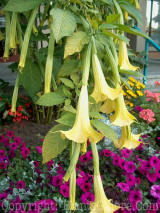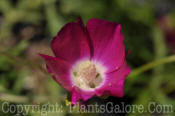 Every species or type
of ornamental plant that we use in the home
landscape has a specific time of year that it
blooms. Winter aconite bloom appear about the day
that the snow first melts in the early spring.
Asters and chrysanthemums continue to flower well
into late fall and may still be in bloom following
the first snow fall.
Every species or type
of ornamental plant that we use in the home
landscape has a specific time of year that it
blooms. Winter aconite bloom appear about the day
that the snow first melts in the early spring.
Asters and chrysanthemums continue to flower well
into late fall and may still be in bloom following
the first snow fall.
Of course, when a
particular species of plants bloom in your landscape
will depend on a number of factors. For most of us,
the key factor will be the weather and more
specifically, temperatures. So, a plant growing in
Minnesota may flower a few weeks later than the same
species in a garden in Georgia.
Keeping this in mind,
the lists we have accumulated are primarily those
grown in the upper Midwest in Climate Zone 5.
Therefore, the months listed will need to be
adjusted for areas in more southern zones.
 However, the
relative order of bloom for the different plants
should stay pretty much the same. In other words, a
forsythia bush should bloom before daylilies
which should mostly bloom before the asters start to
flower. This should be true regardless of your zone.
However, the
relative order of bloom for the different plants
should stay pretty much the same. In other words, a
forsythia bush should bloom before daylilies
which should mostly bloom before the asters start to
flower. This should be true regardless of your zone.
Other factors that
may impact the timing and length of the blooming
season would include:
-
Yearly Variation
- Each year's growing season may vary a bit from
the "typical" situation. If the spring warms up
earlier than usual, plants will begin to bloom
earlier too. Of course, an unusually early frost
in the fall will shorten the season.
-
Hot Nights -
Night temperatures that are above average for
extended periods may cause flowers to shatter
and fall apart earlier than normal.
-
Micro-Climates -
Unique features in the immediate vicinity of the
plant may cause its bloom season to vary from
normal. Plants grown near the reflected heat of
the house may bloom early while those in a low,
cool part of the landscape may be delayed
slightly.